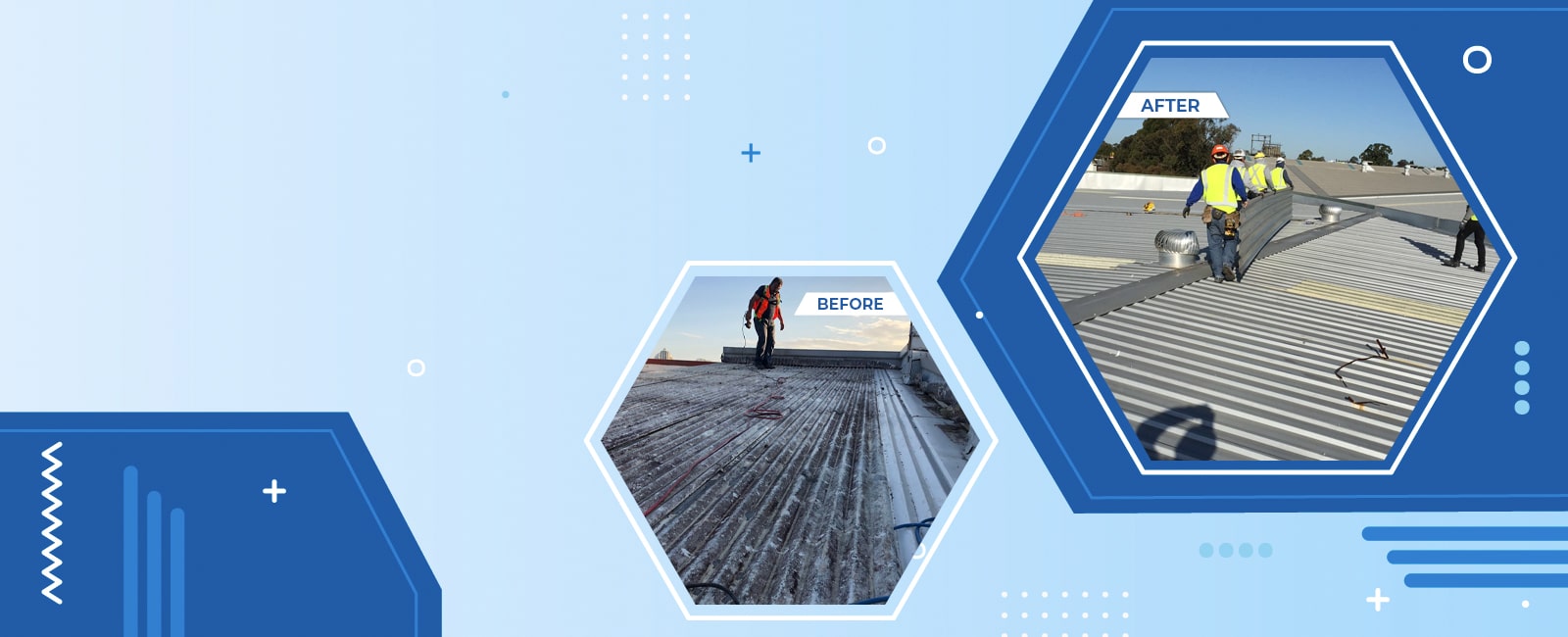Introduction
Metal, iron, and steel are leading competitors for roofing materials that give resilience, strength, and lifespan. Because of their durability and capacity to withstand a variety of weather conditions, these materials are extensively utilised in residential and commercial buildings. Even the most durable roofs may require restoration over time to preserve structural integrity and aesthetic appeal. In this detailed guide, we will examine the process of metal, iron, and steel roof repair, highlighting crucial procedures and factors to assist you in efficiently revitalising your roof.
1. Assessing the Roof’s Condition
It is critical to analyse the state of your metal, iron, or steel roof before beginning any restoration effort. Begin by physically evaluating the roof for indicators of damage including rust, corrosion, loose screws, or dents. Look for spots where the protective covering has worn away or where water has accumulated. Check the overall structural condition of the roof, including the flashing, gutters, and downspouts. Assessing these criteria will provide a clear picture of the scope of the restoration needed.
2. Cleaning and Preparing the Roof
The next phase in the restoration procedure is to clean and prepare the roof surface properly. Clear away any trash, leaves, or moss that has accumulated over time. Clean the roof using a pressure washer or a sharp brush to remove all dirt and grime. Pay special attention to the seams and joints, which are prone to dirt accumulation. Allow the roof to dry completely before proceeding with the following procedure.
3. Repairing and Replacing Damaged Components
You may have identified portions of the roof that require repair or replacement during the evaluation process. Before proceeding with the restoration, address these concerns. Replace any missing or loose screws, as well as any damaged flashing or corroded portions. It is critical to address these issues in order to ensure the roof’s stability and prevent future damage. Consider using a rust converter to cure any rusty areas and prevent additional corrosion.
4. Applying Protective Coatings
Protective coatings are essential for increasing the life of metal, iron, and steel roofs. These coatings operate as a barrier against moisture, UV radiation, and other damaging exterior elements. To improve adhesion, start by applying a primer that is compatible with the metal type. After the primer has dried, apply the chosen coating with a paintbrush, roller, or sprayer, as directed by the manufacturer. Ensure even coverage and pay special attention to water-prone areas like as seams and joints.
5. Regular Maintenance and Inspection
After the restoration procedure is complete, it is critical to set regular maintenance and inspection routines to ensure the longevity of your roof. Conduct routine visual inspections to detect any symptoms of damage or degradation. Clean the roof on a regular basis to prevent debris buildup. Remove any overhanging branches or things that may cause scratches or punctures in the surface as well. You may avoid costly repairs and protect the longevity of your roof by being proactive in its maintenance.
Conclusion
Roofs made of metal, iron, or steel are good choices for long-lasting and durable roofing solutions. However, these roofs may require restoration over time to maintain structural integrity and aesthetic. You may revitalise your roof and extend its lifespan by following the methods given in this article, which include assessing the roof’s state, cleaning and preparing the surface, fixing damaged components, adding protective coatings, and adopting regular maintenance. Metal, iron, and steel roof restoration is a worthwhile investment that not only improves the appearance of your home but also protects it from the weather.
Remember that appropriate assessment and frequent maintenance are essential for identifying and correcting concerns as they arise. You may avoid future degradation and extend the life of your roof by repairing any damage as soon as possible and applying protective coatings.
If you are unsure about doing the restoration yourself, it is best to get professional help. Roofing professionals have the knowledge, experience, and tools needed to ensure a comprehensive and efficient restoration process.





